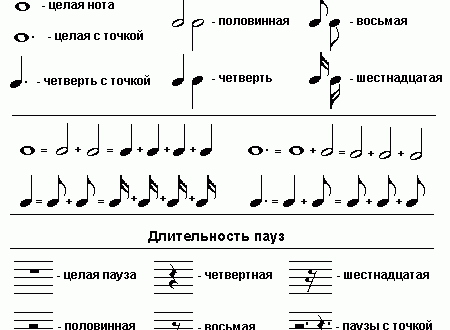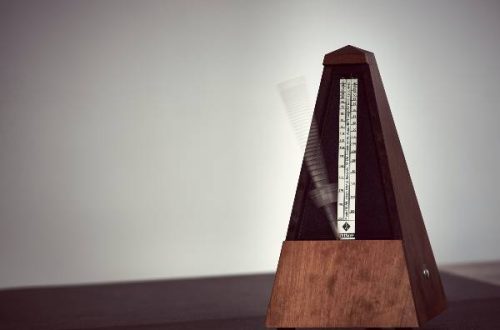
Triplets
Contents
What is needed to make a melody more unusual, beautiful?
Let’s go back to the length of the notes. Until this article, we have considered durations that are multiples of two. There is another option for the designation of “fractional” durations. This is an important topic, but a simple one.
Triplets
Let’s look at the picture (the triplets are circled in red squares):

Figure 1. Triplets
Please note: all note durations in the example are the same – eighth notes. There should be 8 of them in a measure (at a time of 4/4). And we have 10 of them. The trick is that we use triplets. You have already noticed the red squares. They have 3 eighth notes. Triplets of notes are united by a bracket with the number 3. This is the triplets.
Let’s deal with the duration of the triplets. A simple way to calculate duration is as follows. We look at the duration of each note in the triplet: the eighth ( ![]() ). The notes of a triplet are played so as to play 3 notes evenly in the time allotted for two notes. Those. each note of the triplet shown in the example sounds a little shorter (by 1/3) than the eighth duration is usually supposed to be. That is why in the example we play 2 notes first, and then move on to triplets: You will hear that the time interval between the accented notes is the same!
). The notes of a triplet are played so as to play 3 notes evenly in the time allotted for two notes. Those. each note of the triplet shown in the example sounds a little shorter (by 1/3) than the eighth duration is usually supposed to be. That is why in the example we play 2 notes first, and then move on to triplets: You will hear that the time interval between the accented notes is the same!
Let’s look at the picture:
 ==
== ![]() _
_![]()
Figure 2. Triplet duration
The triplet contains 3 eighth notes. In duration, they sound the same as 2 eighths or 1 quarter. Click on the picture above and listen. We have specially placed accents on notes. In the midi file, accented notes are amplified by a cymbal to make it easier for you to hear how first 2 notes and then 3 fit in an even rhythm.
It should be noted that pauses may be present in triplets. The duration of the pause will be measured in the same way as the duration of the note included in the triplet.

Figure 3. Pauses in triplets
Have you more or less dealt with triplets? Let’s look at one more example. Let’s take sixteenths as a basis. The duration of the triplet will correspond to two sixteenths or one eighth, which is the same.

Figure 4. Example of triplets
Just like in the previous example, we first play the notes in pairs and then in triplets. Here we also placed accents and also play with cymbals. The sound example is fast enough (after all, it’s sixteenth notes), so (to make it easier to understand) we draw a drum part in the picture. There are two vertical lines in the key – this is the key for the percussion part. Crosses indicate strikes on cymbals, the durations are the same as in ordinary musical notation.
By ear it is clearly audible that triplets are played faster. You can see in the drum part drawing that the distances between cymbal strikes (and accented notes) are the same. The emphasis is even.
Now you know what triplets are, how they are designated, how they are played. As a rule, they say that a triplet is formed by dividing the main duration into three parts instead of two. In what follows, we will use this definition.
quintol
Quintole is formed by dividing the main duration into 5 parts instead of 4 parts. Everything – by analogy with the triplets. It is designated in the same way as the triplet, only the number 5 is put:

Figure 5. Quintole
Here is an example of a quintuplet:

Figure 6. Quintole example
Sextol
The sextol is formed by dividing the main duration into 6 parts instead of 4 parts. Everything is by analogy. We will not overload the article with examples that are already clear in advance.
Septol
The septol is formed by dividing the main duration into 7 parts instead of 4 parts.
Duol
The duol is formed by dividing the main duration with a dot (for example: ![]() ) into 2 parts.
) into 2 parts.
Quartol
The quartole is formed by dividing the main duration with a dot into 4 parts.
Quite rare, but there are divisions into smaller parts: into 9, 10, 11, etc. A note of any duration can act as the “main duration” for division
Results
You got acquainted with triplets (quintoles, etc.), understood what they are, know their designations and imagine how they sound.





